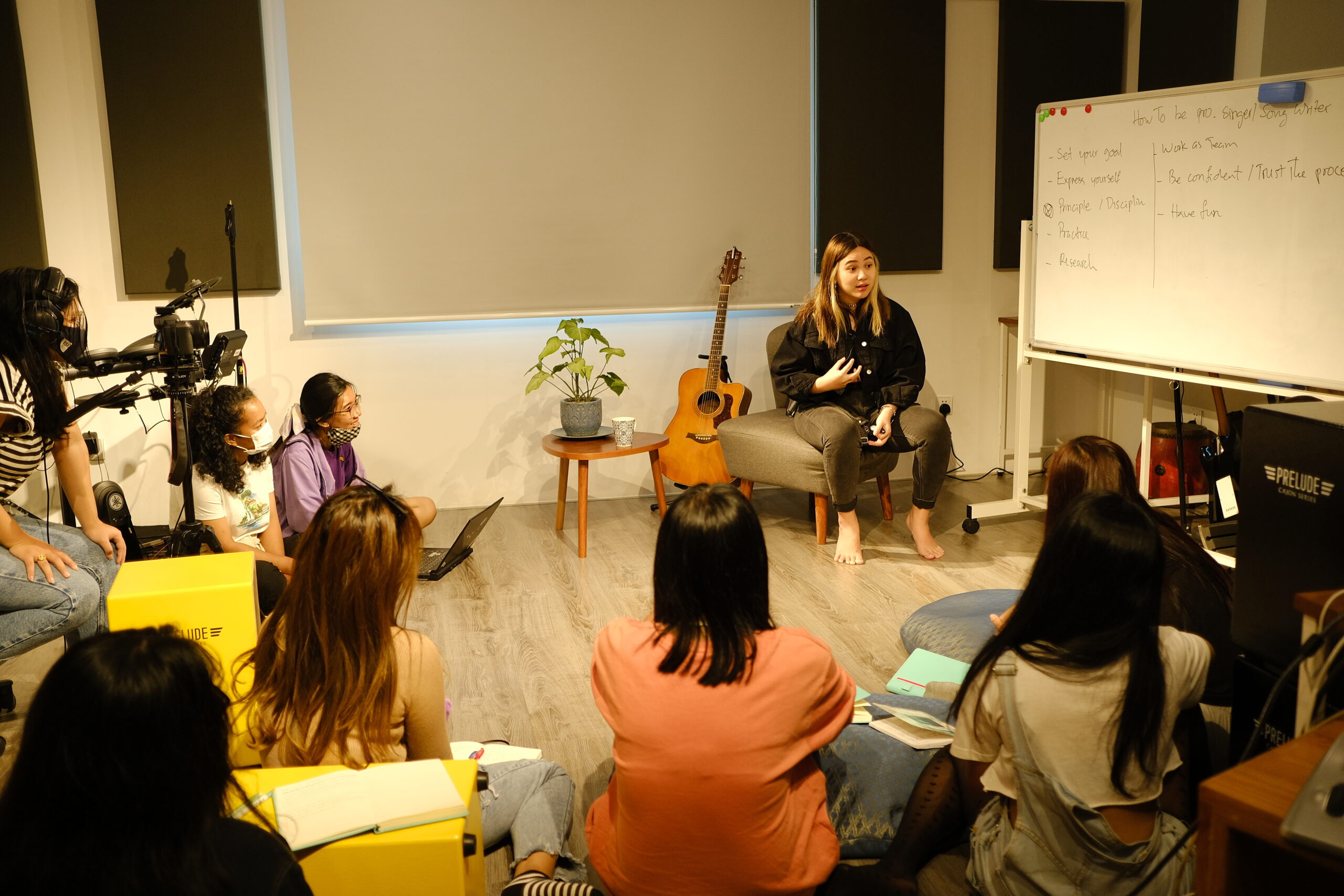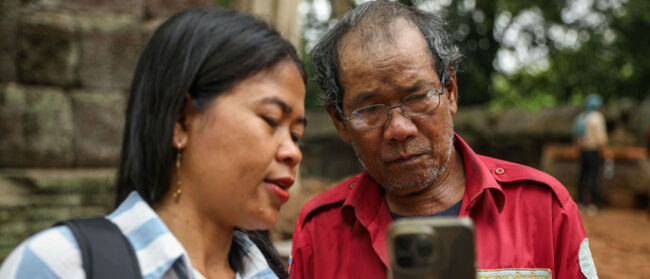
A new generation of female artists are challenging the status quo in Cambodia
As many young women move into creative professions, stigma and cultural norms are being shattered

Big beats, slick production, and flowing rhymes are a world away from the droning melodies and hypnotic drumming of traditional Cambodian music. But for Rangsey Ry, who goes by YungLady on stage, a chance encounter with American hip hop at 12-years-old set the stage for a musical journey that has put the Phnom Penh native’s commitment to the test.
“My family didn’t believe in creative careers, they thought that if you are creative and you want to be an artist you won’t make much money,” Ry said. “So my father pushed me into teaching English and going to university, but I never gave up.”
Pursuing a career in the arts is a daunting proposition anywhere. But in Cambodia, where filial duty trumps personal passion and creative professions are still stigmatised, women artists face even greater challenges. However, there are a number of organisations working to support young artists by equipping them with the tools to succeed while changing attitudes about the legitimacy of creative careers.

Inspired by the music she heard on her uncle’s stereo, Ry eventually got involved with a local hip hop label that gave her a taste of the music business. But expectations to sing other people’s songs, sexism in the industry, and mounting economic pressure left the 27-year-old burnt out and on the brink of abandoning her passion.
“I wanted to give up because I couldn’t put out any music,” she said. “It was so hard to find a music producer to work with, because I could see they didn’t believe in female rap artists.”
Ry’s struggle to be taken seriously in a field full of men is not unique in the world of hip hop. But the stigma attached to female performers in Cambodia is more complex than the broader music industry “boy’s club.” Armed conflict and political instability lasting into the 1990s led to abuses of power that continue to shape current perceptions of women artists.
“Female artists were forced into sex and relationships they didn’t want because the social structure was the people who hold the guns hold the power,” said Dara Huot, CEO of Phare Performing Social Enterprise (PPSE). “So to the general public, they were [often] seen as prostitutes.”
Providing government-accredited schooling to hundreds of children every year as well as vocational training in music, art and circus performance, PPSE prepares young Cambodians for careers in a variety of creative industries.
Born from an art therapy project in a refugee camp on the Thai border and officially founded in 1994 by French humanitarian Véronique Decrop, the Battambang-based Phare organisation is home to the nation’s premier circus troupe and has grown into a social network dedicated to “transforming the lives of Cambodian youth through gainful employment in the arts.”
Huot enrolled as a student in 2001 before he was hired to manage the group’s social enterprise wing. During his two decades with the group, he has watched his country develop as peace and stability replaced conflict and trauma. But antiquated attitudes remain a challenge.
“Cambodia today is a lot different from before, it is a more democratic society, we have rule of law and it is now safe for artists to be artists,” Huot said. “But to recover the public opinion is a lot more difficult and will take a lot more time.”

One approach that PPSE uses to change public perceptions is to provide skills that prepare young people for the commercial side of careers in art. Building soft skills, training in contract language as well as CV building and mock job interviews give students valuable experience for post-graduation life.
Phare is not the only group prepping the next generation of Cambodian artists with real world skills. Just as Ry was considering giving up on her hip hop dreams, a friend directed her to another organisation working to support artists and legitimise creative careers.
A Phnom Penh-based organisation helping to train young people in many of the essential skills of the music industry, The Sound Initiative (TSI) offers everything from lessons in songwriting and audio engineering to classes in career management and digital promotion.
“I didn’t have any money, I didn’t know where to go, I had no direction,” Ry explained. “Then my friend told me about The Sound Initiative. It was a program that would give me a platform to collaborate with other artists. I said I would give it a try, but that it would be my last try.”
Along with the organisation’s professional studio that handles production for commercial work, as well as student and alumni projects, TSI has become a leading force for women empowerment in Cambodia’s growing music industry. The group’s Women Amplified Voices (.WAV) project is a collaboration with international nonprofit Pact that gives women space to take artistic risks and create socially conscious music on issues ranging from environmental advocacy to women’s rights.

At TSI, Ry studied songwriting and audio production and got the chance to work with other talented young women. She also met 27-year-old Kanhchna Chet during a workshop where she shared her experiences in the industry and emphasised the importance of investing in your own career.
“Being an artist is not just about being an artist, you are an entrepreneur,” Chet explained. “You need income, so you need to know how to survive by creating and investing in your own art and your own music.”
Working with the group since its early days and serving as an ambassador for TSI’s .WAV program, Chet is now the creative director of local record label Rondom, where she continues to write her own music and support other artists.
While she has faced similar challenges of family obligations and sexism, Chet has also witnessed progress in recent years, as this new generation of women move into creative professions.
“There has been a big change, since maybe around 2018, there is a lot of movement in the music industry,” she said. “I can see local people opening their minds and trying to see something different from the past.”

One sign of a growing shift in perspective is public-sector support for the arts in Cambodia. Collaboration between Phare, TSI, and government ministries on several strategies seem to indicate a departure from the past.
“We are looking for a better way to create value for artists,” said Samheng Boros, secretary of state for the Ministry of Social Affairs, Veterans and Youth Rehabilitation. “They may be a singer, but they are being valued by the government and being pushed forward. This could reshape attitudes and help get rid of the stigma.”
One way artists could access this support is by taking advantage of the newly launched National Social Security Fund (NSSF). Though it is mainly accessible through a shared-responsibility scheme with employers, Boros is determined to make space for creative careers as the NSSF continues to expand and develop.
A podcast in collaboration between Boros and TSI on the role of art and music in Cambodian culture is a promising sign that young officials are opening channels with artists and working to legitimise creative professions. Discussions between TSI and other relevant ministries about copyright registration of music is another sign of hope for the next generation of musicians.
For female musicians such as Ry and Chet, carving out their own space and creating art in the face of lingering stigma is a calling – not a choice.
“I got a lot of backlash from what I’ve done, because I am very bold and out there,” Ry said. “Not many women make rap music in Cambodia as independent artists. But what I am doing now is trying to make sure that women know it is possible.”
This article was produced as a part of an in-kind partnership between TSI Studio and Southeast Asia Globe. Learn more about TSI Studio by visiting their website, Facebook and LinkedIn.

